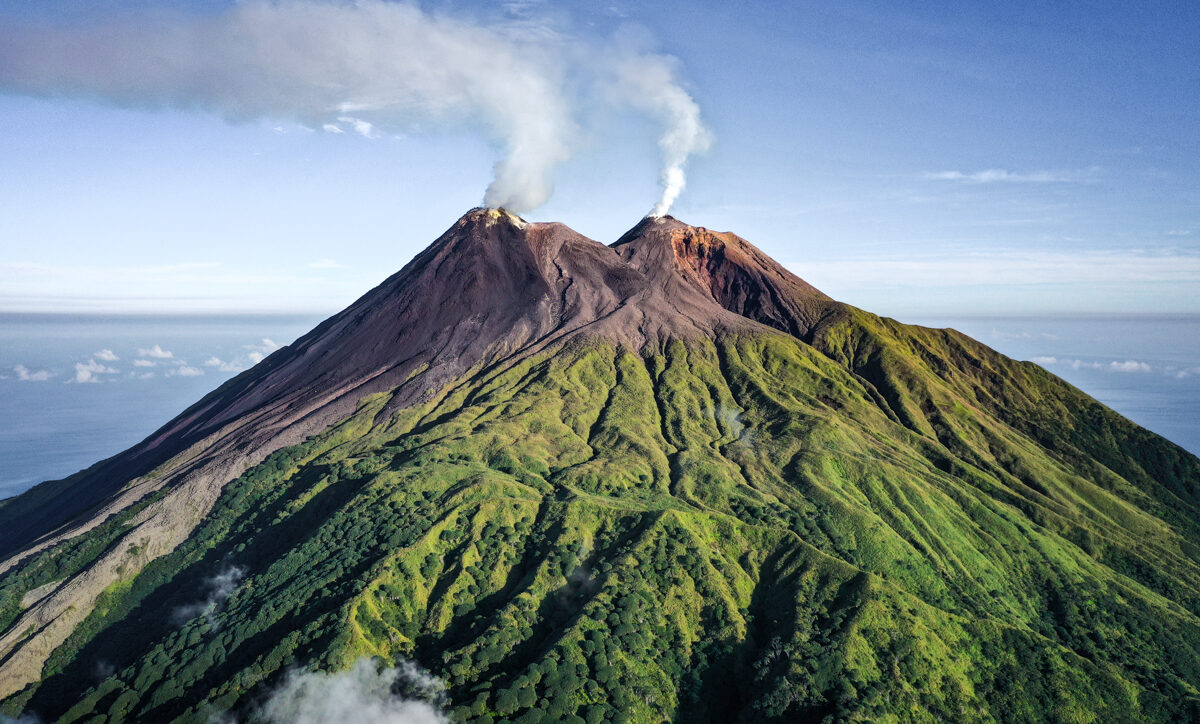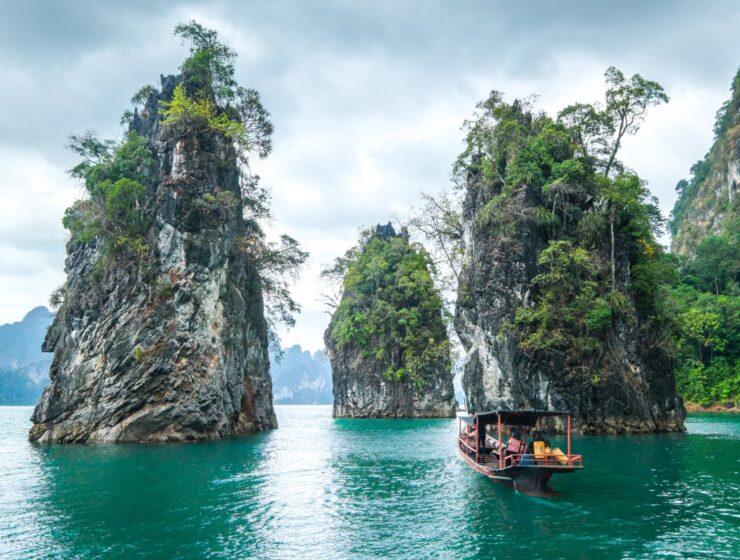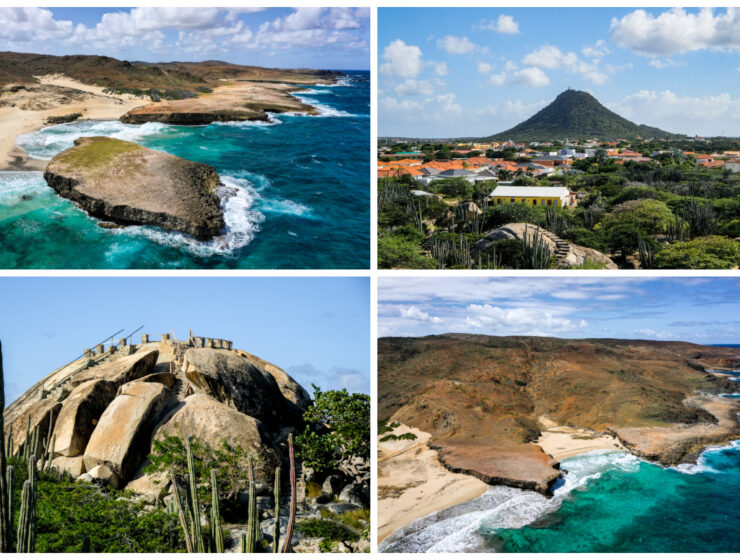Mount Karangetang is an awesome Jurassic Park-looking volcano that dominates the remote island of Siau in North Sulawesi, Indonesia.
You can’t go anywhere on tiny Siau island without seeing this majestic volcano and its twin smoking craters. If you’re lucky, you may even get to see it spouting molten lava and rock bombs at night, which it does pretty often.
In this guide, I’ll share my experience hiking the Karangetang volcano in 2021, and I’ll give some tips in case you plan to climb it yourself.

Drone picture of Mount Karangetang volcano
Is It Safe?
First of all, let’s talk about safety. Karangetang is a highly active volcano — probably one of the most active volcanoes in the world.
The local guides are knowledgeable and any seismic activity is monitored by the Indonesian government, but there’s still plenty of risk involved in climbing this mountain. It may erupt at any time.
You can climb to the top of Karangetang if you’re feeling extra crazy, but to be safe most people only hike partway up this mountain and peep at the smoking craters from a distance (and even that is a bit risky).
Climbing any active volcano carries some danger obviously, but this one is unusually active, so proceed at your own risk.

Smoking dual vents at Gunung Karangetang
My Local Guide: Dominik
I would highly recommend going with a local guide for this hike, because the trail is hard to navigate otherwise.
I did this hike with Dominik, a local guide in Siau island with many years of experience climbing Karangetang. His brother also joined us for the hike and helped clear vegetation with a machete, and their dog came along too.
You can contact Dominik by WhatsApp at ☎ +62 853-9866-6999. I paid 600k Rupiah for this hike, although that was during Covid and the prices are higher now.
He can also help arrange other tours and activities in the area, although we set those up through the Kalea Beach Resort, where we stayed in Siau.

Climbing the volcano with my guides

Summit view from the old lava field
Mount Karangetang: What To Expect
• Starting The Hike
My guides and I started this hike very early because I wanted to be sure to get clear views of the volcano.
That turned out to be a good decision, because when we exited the treeline some thick clouds began to roll in, slowly obscuring the summit.
There was a 30 minute scooter ride to the trailhead on the south side of the volcano, and then we started hiking at 3:15 AM.

We could see most of the island once we got out of the jungle
• In The Jungle
Our progress was slow because of the crazy terrain. It was dark and the path was solid jungle!
There was extremely dense foliage since the trail had basically been abandoned during Covid, which meant my guides had to hack through it with a machete. Every step required another swing with the machete.
Along the way, we saw lots of giant green millipedes, which were harmless, but we also ran into a giant centipede, which was more threatening since they can bite. He raised up in an attack position, and the guides told me their bite really hurts.
Navigating the trail was complicated by the fact that it was so steep, muddy, and slippery. We fell a lot.
It was never dangerous in terms of drop-offs, although I was a little worried about one of us falling on my guide’s machete or something like that.

Out of the jungle and into the lava rocks

Got some scrapes from falling in the jungle
• Old Lava Field
After about 2.5 hours of hiking, we reached an old lava field below the summit, just in time for sunrise.
Climbing these lava rocks wasn’t much better than going through the jungle. Some of them were mossy and extremely slippery, and I bloodied my shins from falling on the rocks multiple times, even though I was wearing good grippy shoes.
For safety reasons, we stopped in the lava field. We were about two-thirds of the way to the summit and didn’t mean to go any farther since the volcano is notoriously active.

Views from the old lava field. This is where I stopped and flew my drone.
From here, I spent about an hour flying my drone and checking out the summit. This volcano is really interesting because it has dual smoking cones at the summit. So cool!
By the time we started our descent at 7:25 AM, the summit was already mostly covered in clouds. Going down was easier since the path was already cleared, but it still took about 1 hour and 45 minutes.
If I had nine lives, I’d love to climb all the way to the summit and see the craters up close. Even though we stopped before the summit, Karangetang was a great hike and we got some great views!

What a place!
When To Do The Hike
Siau island has a tropical rainforest climate similar to Manado and the rest of North Sulawesi.
The driest months are July to October, and those are the best months to hike Karangetang.
We visited Siau in June and the weather was good during our trip.
My Travel Guide For Siau Island
Thanks for looking! I hope you enjoyed this blog post about climbing the Mount Karangetang volcano in Indonesia.
Don’t forget to check out my complete guide for Siau island before you go! This place has some amazing beaches, tarsiers, and other things to see.



